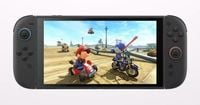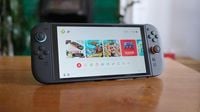When Nintendo launched the Switch 2, anticipation was sky-high among gamers eager to dive into the next generation of portable gaming. But as the first wave of players began exploring the new console and its offerings, a more complicated picture emerged—one that blends innovation with frustration, excitement with disappointment.
The Nintendo Switch 2 Welcome Tour, a paid tech demo designed to introduce users to the console’s features, has become a lightning rod for controversy. Unlike traditional bundled demos, this one requires players to purchase it separately, and even then, completing it fully demands additional hardware beyond the base console. According to a recent report from IGN, three of the mini-games within the Welcome Tour require specialized add-ons: a 4K-capable display, a camera, and GL/GR buttons found only on the official Charging Grip or Pro Controller for the Switch 2.
While owning a 4K TV or monitor might be common for some, it’s a significant expense for others, especially if the purchase wasn’t already planned. The camera requirement is even more limiting—the only guaranteed way to complete the challenge is with Nintendo’s official Switch 2 Camera, though some third-party USB-C cameras might work, albeit without full reliability. The GL/GR buttons are exclusive to Nintendo’s own accessories, meaning that players who don’t own these peripherals face yet another barrier. There’s also a challenge requiring HDR support, which typically comes with 4K displays, but still adds to the hardware checklist for completionists.
Completionists hoping to earn the coveted Gold medal in Welcome Tour face a tough choice: invest in all these extras or skip certain challenges, potentially using cheat codes to progress. This has sparked debate among the community about the fairness and accessibility of the Welcome Tour experience.
Delving deeper into the Welcome Tour itself, Area B focuses on the main Switch 2 console, featuring a collection of Stamps to collect, trivia quizzes, tech demos, and mini-games. The quizzes offer detailed insights into the console’s design and technology. For example, the speakers are housed in a box that is tightly sealed on all sides except the front, sandwiched by cushions, and point diagonally downward to optimize sound accuracy. The stand is U-shaped and made of an aluminum alloy comparable in lightness and robustness to Extra Super Duralumin. Game cards for the Switch 2 boast increased capacity compared to their predecessors, with a distinct shape that helps the console identify the card type. The built-in microphone, designed for GameChat, includes a chip that removes background noise like fan buzzing but intentionally preserves sounds such as clapping to enhance the experience. The console’s screen is composed of pixels, supports HDR for bright light display, refreshes up to 120 times per second, is VRR-compatible for smoother visuals, and can track up to 10 touch points simultaneously.
Despite these technical advancements, some early adopters have expressed reservations about the Switch 2’s overall impact. A reader who received their Switch 2 on June 5, 2025, and has logged around 12 hours of gameplay, shared mixed impressions. They praised the console’s design and thoughtful construction but criticized the LCD screen, which they see as a backward step from the OLED model of the original Switch. The reader lamented the lack of an OLED option at launch, suspecting Nintendo might be nudging consumers toward future upgrades.
Concerns also extend to the physical connection of the Joy-Cons. While the magnets are clever, the reader worries about potential snapping, though they hope to get used to it. The dashboard and interface remain unchanged from the original Switch’s latest update, which contributes to a feeling that the Switch 2 isn’t a fresh experience but rather a minor iteration. This sentiment carries over to the games lineup, which the reader describes as weak and unoriginal.
Mario Kart World, one of the launch titles, is essentially Mario Kart 8 adapted for 24 players but without the anti-gravity sections that added flair in previous versions. The open-world element, while impressively large, offers little beyond simple tasks and collecting stickers, failing to add meaningful depth. Beyond this, the launch lineup is dominated by older third-party games, offering little incentive for existing players to upgrade.
In a bid for something new, the reader purchased the Welcome Tour, only to find it falls short of expectations. It’s described as "not even a game," consisting mostly of quizzes and mini-games that feel dull and text-heavy, lacking the charm and humor typically associated with Nintendo. The reader also bought upgrades for two Zelda titles, which offered only minor improvements, further dampening enthusiasm.
Despite these criticisms, the Switch 2 is expected to perform well commercially. The reader anticipates announcements of record-breaking sales in the coming week, even if the launch lineup and features don’t quite live up to the hype.
This complex reception highlights the challenges Nintendo faces with the Switch 2: balancing innovation and accessibility, meeting high consumer expectations, and justifying the cost of new hardware and accessories. The Welcome Tour controversy underscores a broader tension between offering cutting-edge experiences and ensuring they remain inclusive for all players.
As the Switch 2 continues to find its footing in the market, the coming months will reveal how Nintendo addresses these concerns and whether it can deliver the compelling new experiences fans crave. For now, the Switch 2 stands as a console of contrasts—technologically impressive yet hampered by a cautious approach to innovation and a launch lineup that leaves some players wanting more.





